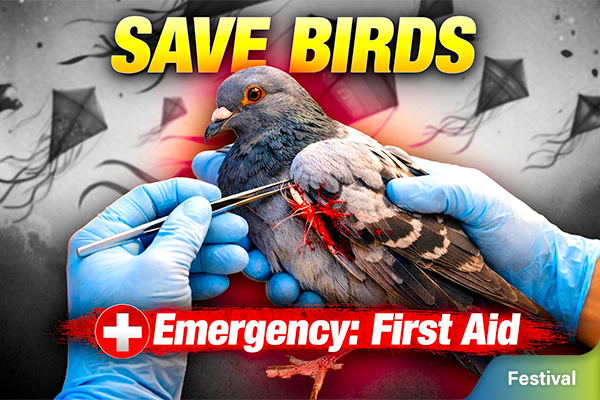The Story Behind Gandhiji’s Assassination
Mahatma Gandhi led the Indian freedom struggle with his ideals of Satyagraha and Non-Violence. His life, thoughts & sacrifices are an inspiration to ever India. Our latest video covers the story of hi
Mahatma Gandhi is known all over the world as a leader who encouraged non-violence & peace. Gandhi, was the leader of the Indian freedom struggle against the British. Finally when India secured independence on 15th August 1947, India was split into two. India and pakistan. States of Bengal and the Punjab were also divided based on district-wise non-Muslim or Muslim majorities.
During the partition of India, he was horrified by the violence that broke out between Hindus, Muslims and Sikhs; and the eviction of thousands from their homes.Gandhiji decided to fast to the death, to shame those who provoked and took part in the strife.Messages of support came from around the world, commended his concern for peace and harmony.
Mahatma said: ‘Death for me would be a glorious deliverance rather than that I should be a helpless witness of the destruction of India, Hinduism, Sikhism and Islam’, and explained that his dream was for the Hindus, Sikhs, Parsis, Christians and Muslims of all India to live together in amity.In September 1947, Gandhi had moved to Delhi to help control the violence & rioting. He was staying at the Birla House in Delhi.
Many Hindus, thought that Gandhi’s insistence on non-violence and non-retaliation prevented them from defending themselves against attack. Outside his house in Delhi people shouted ‘Let Gandhi die!’ and they were extremely angry.
Nathuram Godse, was an advocate of Hindu nationalism, from Pune, Maharashtra. He was a member of the RSS & the Hindu Mahasabha.Godse believed Indian must be a complete Hindu state. He did not believe in Gandhi’s idea of equality of all religions.Godse felt Gandhiji favored the political demands of India's Muslims during the partition of India. This is why he decided to plotted the assassination of Gandhiji with Narayan Apte and six other people. The first attempt to assassinate Gandhi at Birla House occurred on 20 January 1948.
Nathuram Godse and his colleagues followed Gandhi to a park where he was speaking.One of them threw a grenade away from the crowd. The loud explosion scared the crowd, creating a chaotic stampede of people. Gandhi was left alone on the speakers' platform. They were going to throw a second grenade, after the crowds had run away, at the isolated Gandhi. But the person who was going to throw the second grenade lost his courage, did not throw the second grenade and ran away with the crowd. All of the assassination plotters ran away, except one who was arrested.
In response to this attack Gandhiji said: ‘If I am to die by the bullet of a madman, I must do so smiling. There must be no anger within me. God must be in my heart and on my lips.’
10 days later on 30th January, Nathuram Godse, returned to Delhi, armed with a Beretta automatic pistol. Gandhiji had become very weak because of his fast. At About 5pm He was being helped to walk across the gardens of Birla House to a prayer meeting by his great nieces. There were many people around Gandhiji that were bowing to him.
Nathuram Godse emerged from the crowd, bowed to him and shot him three times at point-blank range in the stomach and chest. Gandhi raised his hands in front of his face in the conventional Hindu gesture of greeting, almost if he was welcoming his murderer, and slumped to the ground, mortally wounded.
Some said that he cried out, ‘Ram, Ram’ (‘God, God’), though others did not hear him say anything. In the confusion there was no attempt to call a doctor or take him to a hospital and he died within half an hour. Nathuram Godse tried but failed to shoot himself and was seized and hustled away while the shocked, hysterical crowd cried out, ‘Kill him, kill him!’ and threatened to lynch him.
The next day a huge crowd of almost one million people lined the 8-km route of the funeral procession to the bank of the Jumna River in Delhi. His body was draped in the Indian flag, was carried on an army truck while air force planes overhead dropped flowers.
The journey took five hours and his body was then cremated in the traditional manner. As the flames burned, the grieving crowd showered the pyre with petals. The ashes were kept on the river bank for three days before they were taken away for immersion at the spot where the Jumna joins the Ganges.
Despite the efforts of Nehru and other leaders, violence erupted in Bombay and elsewhere in India, with riots and arson. There were attacks on Brahmins, because the killer was a Brahmin. Police in Bombay had to open fire on the rioters. Godse's case lasted for a year and on 8th November 1949 he was given the death sentence. Gandhiji’s two sons Manilal Gandhi and Ramdas Gandhi requested the court to commute Godse’s death sentence. They asked for another punishment instead. However India's prime minister Jawaharlal Nehru, deputy prime minister Vallabhbhai Patel, and the Governor-General C. Rajagopalachari refused their request. Godse was hanged in the Ambala Central Jail on 15 November 1949.
Our great leader is no more but we must all remember his ideas and beliefs. Currently there are so many problems going on in the country. We must remember Gandhiji's dream of an India where everyone has equal rights and everyone is living peacefully.







